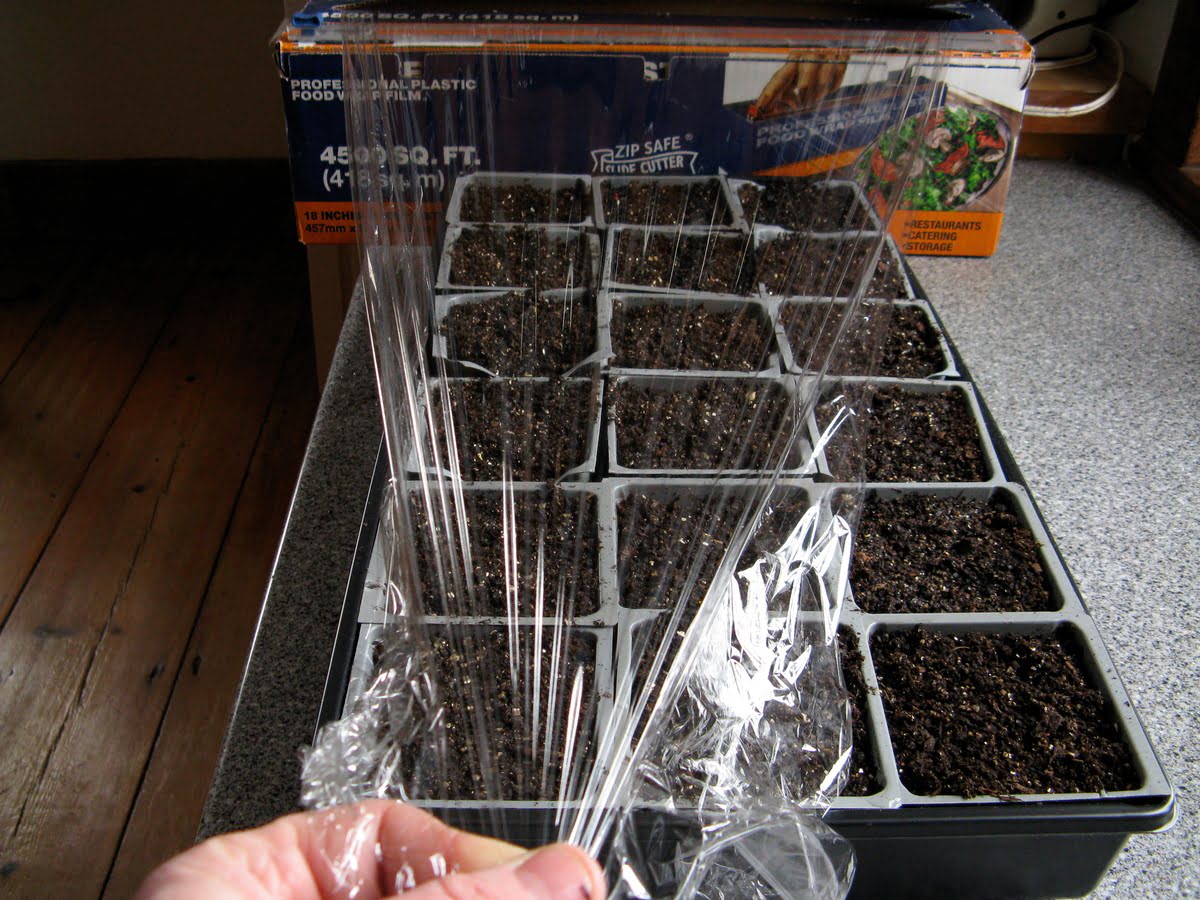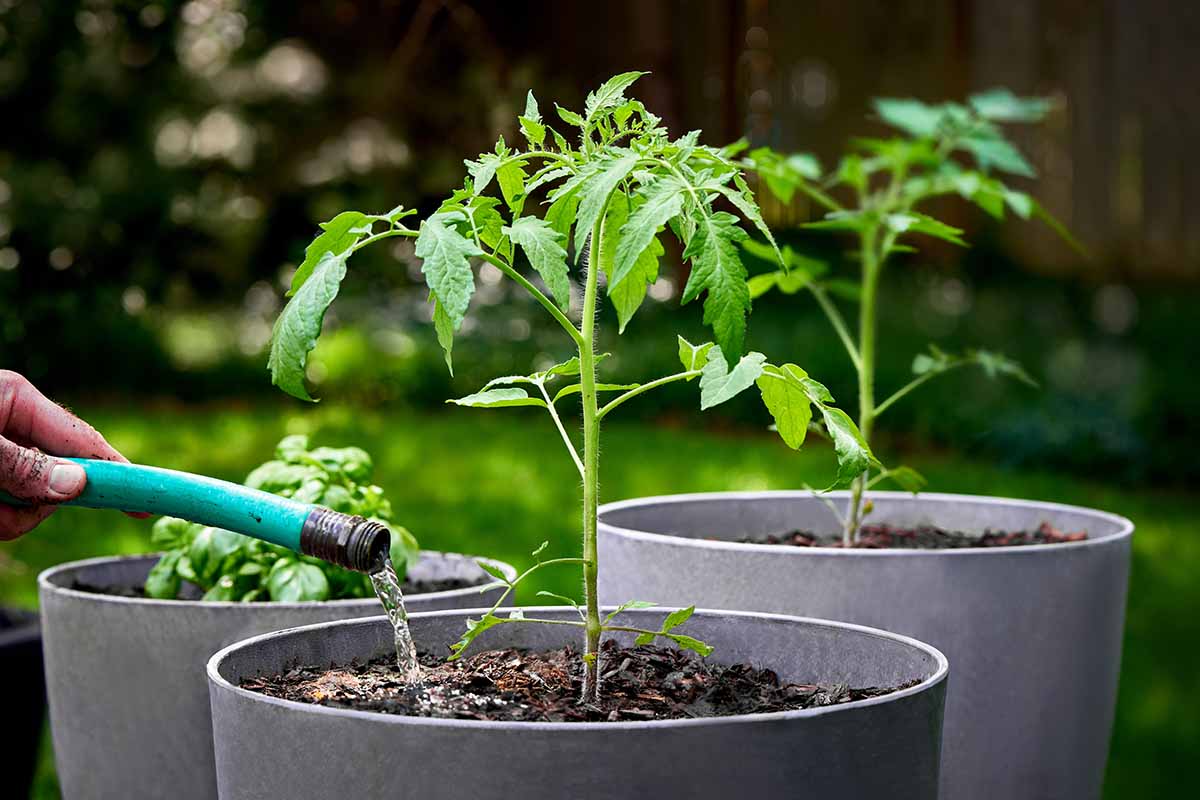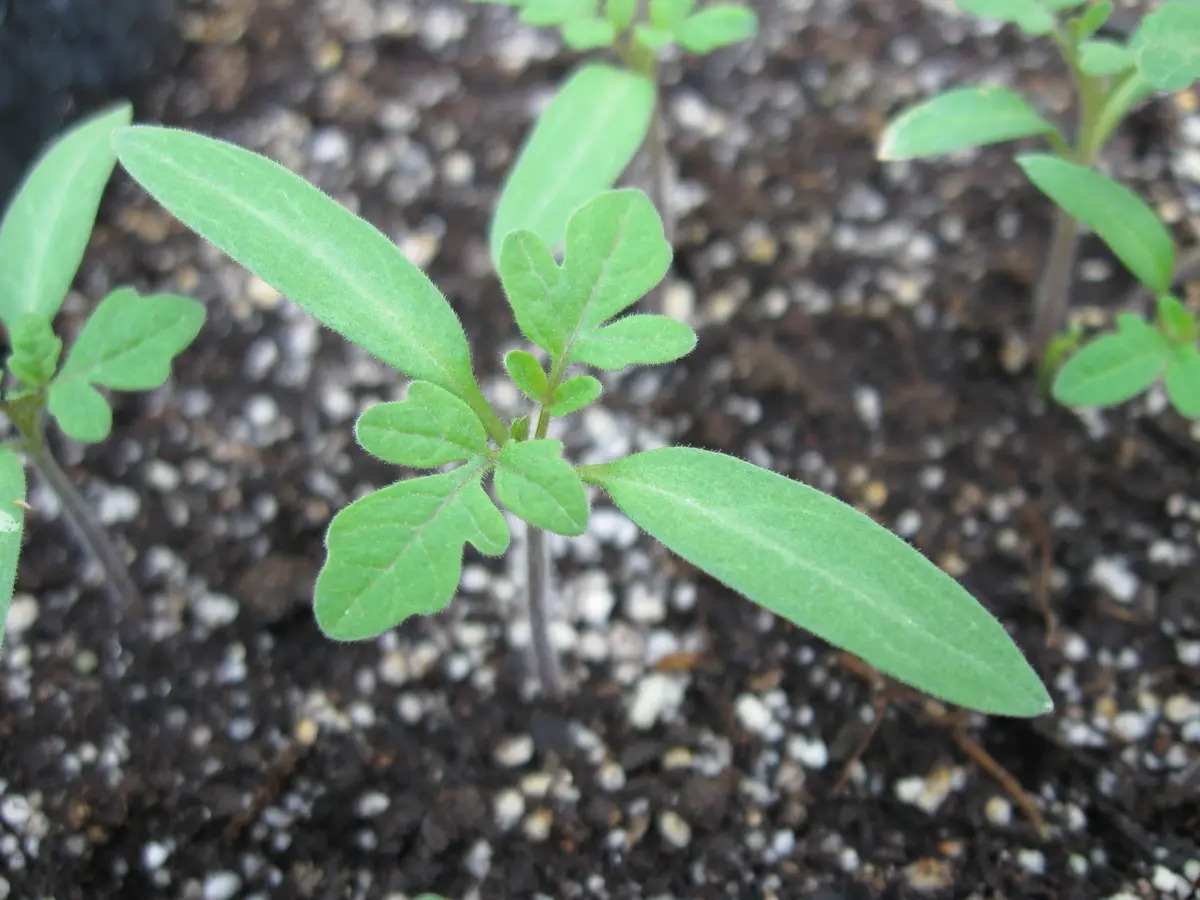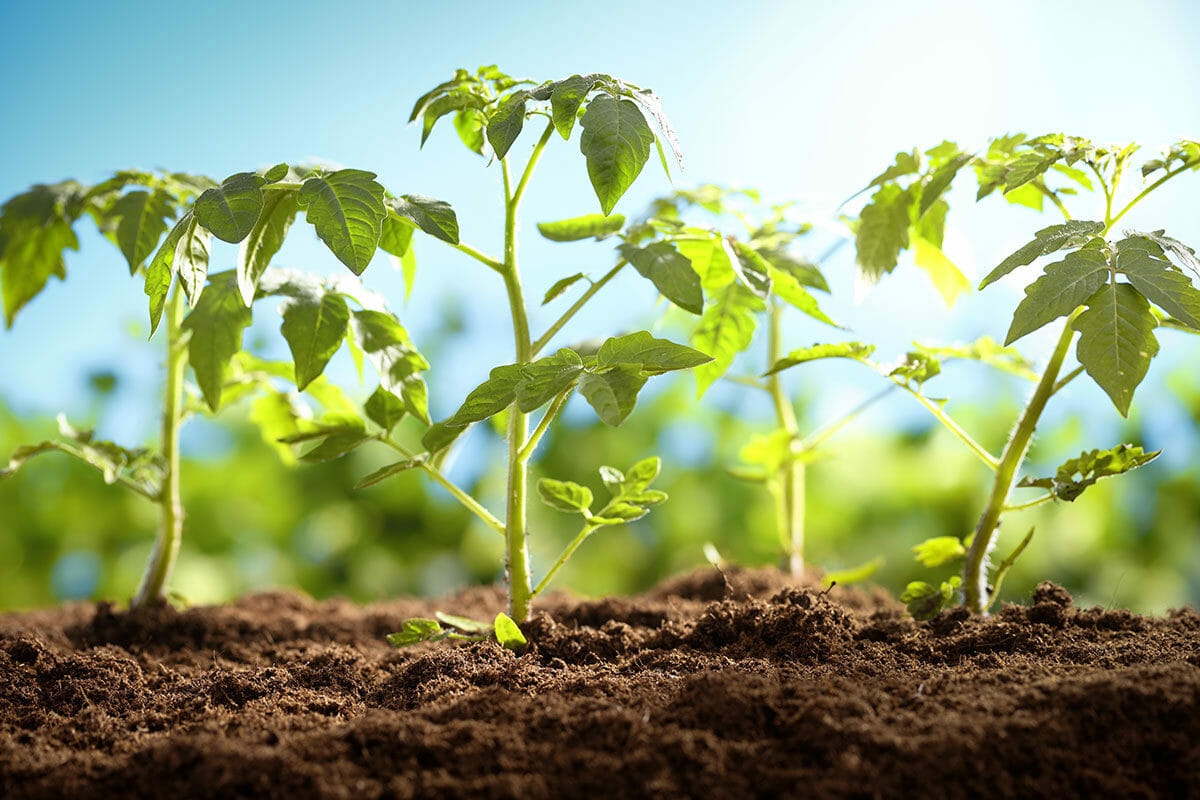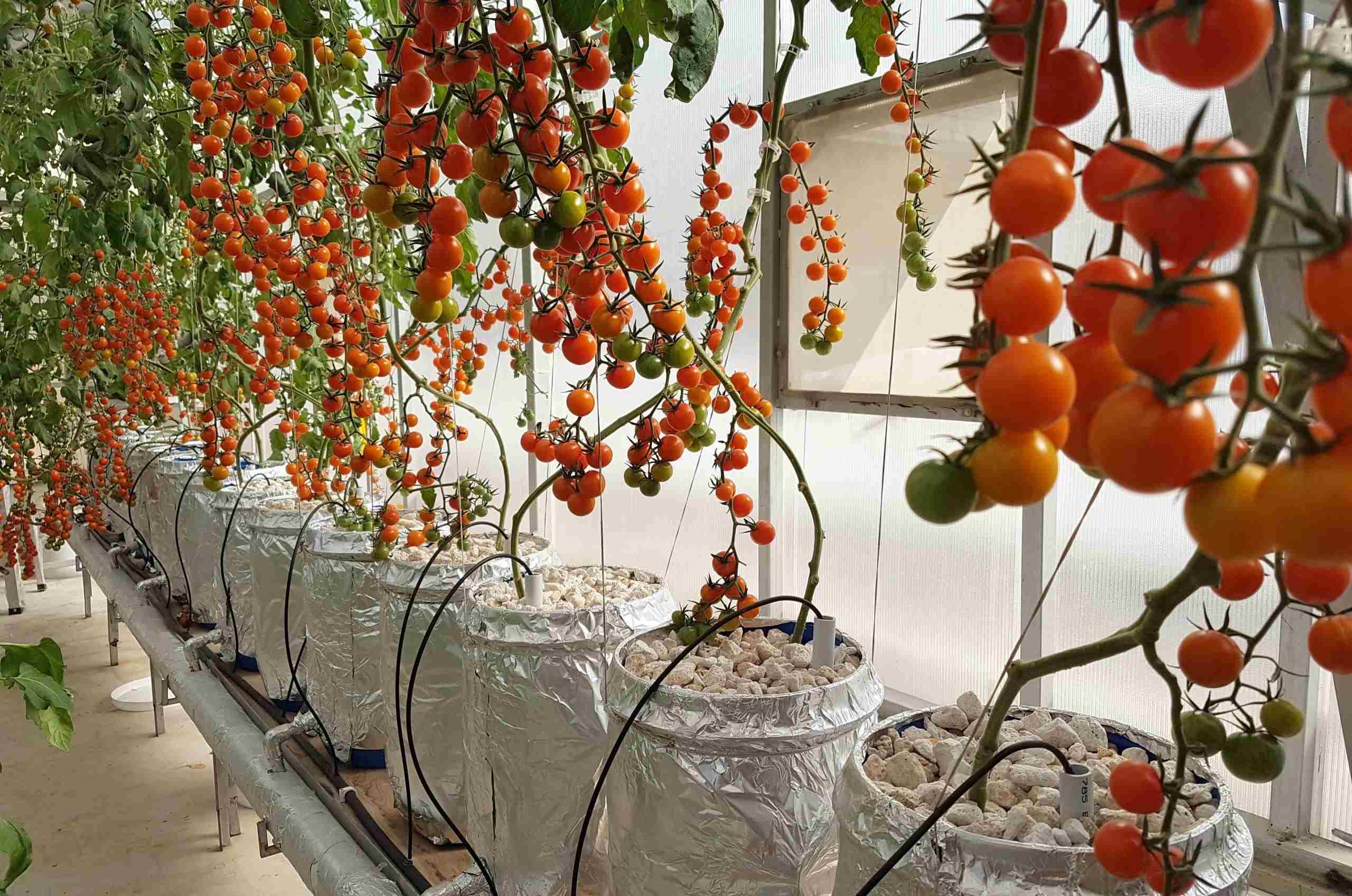Home>Types of Gardening>Edible Gardening>How To Harden Off Tomato Seedlings
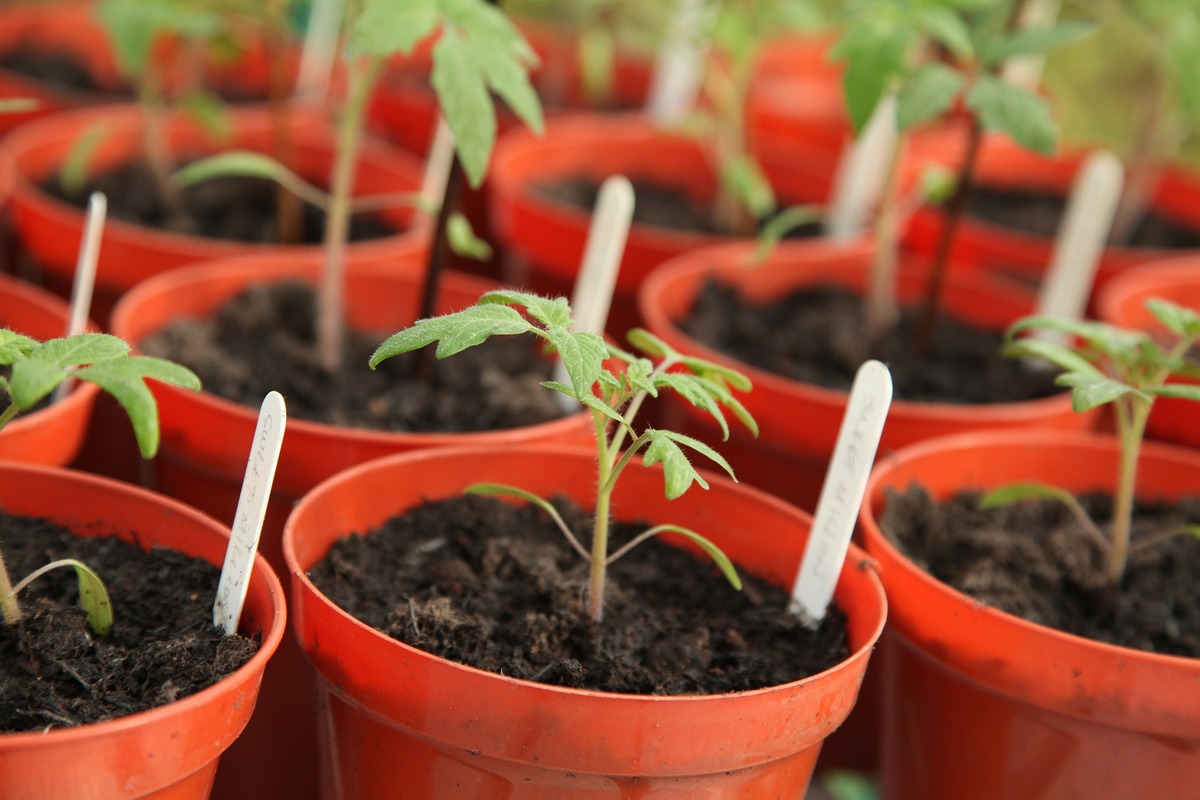

Edible Gardening
How To Harden Off Tomato Seedlings
Published: January 2, 2024
Learn how to harden off tomato seedlings for successful transplanting in your edible gardening journey. Follow these expert tips for a healthy and thriving vegetable garden.
(Many of the links in this article redirect to a specific reviewed product. Your purchase of these products through affiliate links helps to generate commission for Chicagolandgardening.com, at no extra cost. Learn more)
Table of Contents
- Introduction
- What is hardening off?
- Why is hardening off important for tomato seedlings?
- When should you start hardening off your tomato seedlings?
- How to harden off tomato seedlings step by step
- Step 1: Gradually introduce your seedlings to outdoor conditions
- Step 2: Choose the right time of day for the initial exposure
- Step 3: Start with short exposure periods
- Step 4: Increase exposure time gradually
- Step 5: Protect your seedlings from harsh weather conditions
- Step 6: Gradually decrease watering frequency
- Step 7: Monitor your seedlings closely for any signs of stress
- Conclusion
Introduction
Welcome to the world of edible gardening! Growing your own food can be not only rewarding but also a great way to ensure that the produce you consume is fresh, healthy, and free from harmful chemicals. One popular edible plant that many gardeners love to grow is tomatoes. With their vibrant colors, juicy taste, and versatility in various recipes, tomatoes are a staple in many kitchen gardens.
However, successfully growing tomatoes requires more than just planting the seeds and waiting for them to sprout. One crucial step in the process is hardening off the tomato seedlings. In this article, we will explore what hardening off is, why it is important for tomato seedlings, and provide you with a step-by-step guide on how to do it effectively.
So, what exactly is hardening off? In simple terms, it refers to the process of gradually acclimating your tender indoor-grown seedlings to the outdoor environment before transplanting them into the garden. This process helps the seedlings adjust to the changes in temperature, sunlight intensity, wind, and other environmental factors that they would not have experienced in the controlled conditions of your home or greenhouse.
Hardening off is crucial for the success of your tomato plants because it helps to prevent transplant shock. Transplant shock occurs when a plant is suddenly exposed to harsh outdoor conditions after being grown indoors. This abrupt change can stress the plants and lead to stunted growth, wilting, and even death in severe cases.
By gradually exposing your tomato seedlings to the outdoor environment through the process of hardening off, you allow them to develop thicker and stronger stems, develop a tough outer layer on their leaves, and become more resilient to fluctuations in temperature, wind, and other environmental factors.
Now that you understand the importance of hardening off tomato seedlings, let’s dive into the details of when and how to start this process to ensure the success of your tomato plants.
What is hardening off?
Hardening off is a crucial step in the journey of transitioning your tender indoor-grown seedlings to the outdoor environment. As mentioned earlier, this process involves gradually exposing your tomato seedlings to the outdoor elements before transplanting them into the garden.
During the early stages of their life, tomato seedlings are typically grown in controlled conditions indoors, such as in a greenhouse or on a windowsill. This environment offers them protection from harsh weather conditions, temperature fluctuations, and intense sunlight.
However, if you were to directly transplant these fragile seedlings into your garden without preparing them for the outdoor environment, they would experience what is commonly known as transplant shock. Transplant shock is a natural response of plants to sudden changes in their surroundings, and it can hinder their growth and even lead to their demise.
The purpose of hardening off is to minimize the risk of transplant shock by gradually introducing the seedlings to the outdoor conditions they will encounter in the garden. This process allows the plants to adapt and adjust to the new environment, which includes exposure to fluctuating temperatures, varying light intensities, wind, and other environmental factors.
Through hardening off, the tomato seedlings undergo physical changes that make them better equipped to withstand the challenges of their outdoor surroundings. The process encourages the growth of thicker and stronger stems, the development of a tough outer layer on the leaves, and the establishment of a more robust root system.
Additionally, hardening off stimulates the production of specialized proteins and hormones within the plants that improve their ability to tolerate stress. These adaptations enable the tomato seedlings to endure the outdoor elements and the transition from a protected indoor environment to the sometimes harsh reality of the garden.
It is important to note that the duration and intensity of the hardening off process can vary depending on factors such as the climate in your area and the specific needs of your tomato seedlings. It is essential to observe the progress and behavior of your plants closely during this process to ensure their successful acclimation to the outdoor environment.
Now that you have a better understanding of what hardening off entails, let’s explore when is the best time to initiate this process for your tomato seedlings.
Why is hardening off important for tomato seedlings?
Hardening off is a crucial step in the cultivation of tomato seedlings. By gradually exposing them to the outdoor environment before transplanting, you are helping the seedlings make a successful transition from the controlled conditions of indoor growing to the unpredictable conditions of the garden. Here are a few reasons why hardening off is important for the health and vitality of your tomato plants:
1. Acclimation to changing weather conditions: Tomato seedlings that have only been grown indoors are not accustomed to the fluctuations in temperature, humidity, wind, and sunlight that the outdoor environment can bring. Hardening off allows the seedlings to gradually adjust to these changes, reducing the risk of stress and shock when they are finally planted in the garden.
2. Strengthening of plant structures: Indoor-grown seedlings tend to have delicate, thin stems which are not well-equipped to handle the rigors of outdoor growing. Through the hardening off process, the seedlings develop thicker and stronger stems, making them more resistant to bending or breaking in wind or harsh weather conditions.
3. Toughening of leaves: Exposure to direct sunlight and outdoor elements can be a shock to indoor-grown seedlings. By gradually increasing their exposure to sunlight during the hardening off process, the leaves develop a thicker cuticle and increased chlorophyll production, making them better able to withstand the intensity of sunlight and reduce the risk of sunburn.
4. Root development: During the hardening off process, the roots of the tomato seedlings have the opportunity to grow and establish a more extensive and robust root system. This allows them to absorb water and nutrients more effectively when planted in the garden, enhancing their overall growth and productivity.
5. Prevention of transplant shock: The abrupt change from the indoor environment to the outdoor garden can cause severe stress to the tomato seedlings. Transplant shock can lead to wilting, stunted growth, and even death of the plant. Hardening off mitigates the risk of transplant shock by helping the seedlings adapt gradually to their new surroundings, ensuring a higher success rate when transplanted into the garden.
By prioritizing the hardening off process for your tomato seedlings, you are giving them the best chance of thriving in the garden and producing a bountiful harvest. Now that you understand the importance of hardening off, let’s delve into the timing of when you should start this process for your tomato seedlings.
When should you start hardening off your tomato seedlings?
Timing is crucial when it comes to hardening off your tomato seedlings. Starting the process too early or too late can have negative effects on the health and growth of your plants. The ideal time to begin hardening off your tomato seedlings depends on a few factors:
1. Weather conditions: The outdoor weather plays a significant role in determining when to start the hardening off process. Tomato seedlings are sensitive to cold temperatures, so it is essential to wait until the risk of frost has passed. Generally, it is best to start hardening off your tomato seedlings when daytime temperatures consistently stay above 60°F (15°C).
2. Growth stage of the seedlings: It’s important to consider the developmental stage of your tomato seedlings before starting the hardening off process. If they are still very small and delicate, it may be best to wait until they have at least two sets of true leaves before beginning the process.
3. Transplanting timeline: Take into account when you plan to transplant your tomato seedlings into the garden. The hardening off process typically takes around 7 to 10 days, so ensure that you start the process with enough time before your desired transplanting date.
Once you have considered these factors, you can determine the appropriate time to start hardening off your tomato seedlings. In most regions, this typically falls in the late spring or early summer.
Keep in mind that every location and microclimate is different, so it’s important to observe local weather patterns and consult with experienced gardeners in your area to get a more accurate timeframe for starting the hardening off process.
The hardening off process should ideally be completed over a period of 7 to 10 days, gradually increasing the exposure of the seedlings to the outdoor environment. This gradual acclimation helps the seedlings adapt without overwhelming them.
Next, we will walk you through the step-by-step process of effectively hardening off your tomato seedlings to ensure their successful transition and future growth in the garden.
How to harden off tomato seedlings step by step
Successfully hardening off your tomato seedlings requires careful planning and attention to detail. Follow these step-by-step instructions to ensure a smooth and successful transition of your seedlings from indoors to outdoors:
- Gradually introduce your seedlings to outdoor conditions: Start the process by placing your seedlings in a sheltered and partially shaded location outdoors, such as a covered patio or under a tree. This helps them adjust to the outdoor temperature, humidity, and wind.
- Choose the right time of day for the initial exposure: Initially, expose your tomato seedlings to the outdoor environment for just a few hours a day, preferably during the morning or late afternoon when the temperature is mild. This reduces the risk of sunburn or heat stress.
- Start with short exposure periods: Begin with short intervals of 1-2 hours and gradually increase the exposure time over the course of a week. This allows the seedlings to build up their tolerance to the outdoor conditions.
- Increase exposure time gradually: As the days go by, gradually lengthen the time your seedlings spend outdoors. Aim to have them outside for the majority of the day by the end of the hardening off period.
- Protect your seedlings from harsh weather conditions: Keep an eye on the weather forecast and bring your seedlings indoors or provide protection if there are extreme temperature fluctuations, heavy rain, or strong winds. This ensures the seedlings are not exposed to conditions they are not yet ready to handle.
- Gradually decrease watering frequency: Reduce the watering frequency as you progress with the hardening off process. This helps the seedlings toughen up and become more resilient to fluctuations in soil moisture levels.
- Monitor your seedlings closely for any signs of stress: Pay close attention to your tomato seedlings during the hardening off process. Look for signs of wilting, discoloration, or stunted growth, which may indicate they are struggling to adapt. Adjust the exposure time or provide additional protection if necessary.
Remember, every garden and seedling is unique, and it’s essential to observe the behavior and condition of your tomato plants throughout the hardening off process. If you notice any signs of stress or discomfort, adjust the process accordingly to ensure their successful transition.
By following these steps, you will give your tomato seedlings the opportunity to acclimate to the outdoor environment gradually, minimizing the risk of transplant shock and promoting stronger, healthier plants ready for transplantation into the garden.
Step 1: Gradually introduce your seedlings to outdoor conditions
When starting the hardening off process, it is important to gradually introduce your tomato seedlings to the outdoor environment. This gradual transition allows the plants to adjust to the changes in temperature, humidity, wind, and sunlight they will encounter in the garden. Here are some key steps to follow:
- Select a sheltered location: Choose a spot outside that provides some protection from direct sunlight and strong winds. A covered patio, under a tree, or on a porch can be ideal for the initial stages of hardening off.
- Begin with short exposure periods: Start by placing your seedlings outside for just 1-2 hours during the mildest part of the day. This exposure allows them to experience the outdoor conditions without overwhelming them.
- Monitor the seedlings: Keep a close eye on your tomato seedlings during their outdoor exposure. Observe how they respond to the environmental factors and look for any signs of stress, such as wilting or curling leaves.
- Gradually increase exposure time: As the days progress, gradually increase the length of time your seedlings spend outdoors. Add an extra hour or two each day until they are spending the majority of the day outside.
- Protect from extreme conditions: If there are sudden weather changes or adverse conditions, such as intense heat, strong winds, or heavy rain, provide some form of protection for your seedlings. Move them to a more sheltered area or use cloths or shade covers to shield them.
- Pay attention to temperature: Keep in mind that temperature plays a significant role in the hardening off process. Avoid exposing your seedlings to temperatures below 50°F (10°C) during the early stages, as this can stunt their growth and damage their health.
- Do not forget to water: Ensure that your seedlings remain adequately hydrated during the hardening off process. Check the soil moisture regularly and water as needed to prevent excessive drying out.
By gradually introducing your seedlings to outdoor conditions, you are allowing them to adapt gradually, reducing the risk of transplant shock and improving their chances of success in the garden. It is important to closely monitor the behavior and well-being of your tomato seedlings throughout this process and make any necessary adjustments to ensure their smooth transition.
Step 2: Choose the right time of day for the initial exposure
When beginning the hardening off process for your tomato seedlings, it is important to choose the right time of day for their initial exposure to the outdoor environment. Timing is key to ensure the best chances of success for your plants. Here are some guidelines to follow:
- Avoid the hottest part of the day: It is best to avoid exposing your seedlings to the intense midday sun, as this can cause stress and potentially burn the leaves. The sun’s rays are strongest between 10 a.m. and 4 p.m., so it’s recommended to schedule the initial exposure outside of this timeframe.
- Opt for the morning or late afternoon: Choose the early morning or late afternoon/evening for the initial outdoor exposure. During these times, the temperature is typically cooler, and the sunlight is milder, which is less likely to cause stress or damage to the tender seedlings.
- Consider the local climate: Take into account the climate in your specific location. If you live in an area with hot summers, it may be best to avoid the late afternoon exposure, as temperatures can still be high. In such cases, opt for the morning slots to provide a more suitable environment for your seedlings.
- Gradually extend the duration: As you progress with the hardening off process, gradually increase the duration of each outdoor exposure session. This allows the seedlings to acclimate to longer periods of sunlight and varying temperatures.
- Observe the seedlings: Pay close attention to how your seedlings respond to the different times of day. Observe their behavior and note any signs of stress or wilting. This will help you determine the best timing for the subsequent exposures and adjust accordingly.
Choosing the right time of day for the initial outdoor exposure of your tomato seedlings is crucial for their successful transition. By avoiding the hottest part of the day and opting for the morning or late afternoon, you provide a more favorable environment for the seedlings to adjust to the outdoor conditions. Remember to closely monitor their response and make adjustments as needed throughout the hardening off process.
Step 3: Start with short exposure periods
When hardening off your tomato seedlings, it is essential to start with short exposure periods to gradually acclimate them to the outdoor environment. This gradual approach minimizes the risk of stress and ensures the successful transition of your seedlings. Here are some key steps to follow:
- Begin with 1-2 hour sessions: Initially, expose your tomato seedlings to the outdoor environment for just 1-2 hours at a time. This short duration allows them to start getting accustomed to the outdoor conditions without overwhelming them.
- Choose the appropriate time of day: Select the time of day when the temperature is on the milder side and the sun is not at its peak intensity. Ideally, this should be during the morning or late afternoon.
- Observe the seedlings closely: Monitor your seedlings closely during their initial outdoor exposures. Watch for any signs of stress, such as wilting, curling leaves, or discoloration. This will help you assess their response to the outdoor conditions and make necessary adjustments.
- Assess the weather conditions: Take into account the weather forecast and avoid exposing the seedlings to extreme weather conditions, such as strong winds, heavy rain, or excessive heat. Adjust the exposure time or provide temporary protection if needed.
- Extend the exposure gradually: As the days progress, gradually increase the duration of each outdoor exposure session. Add an extra 30 minutes to an hour each time until your seedlings are spending several hours outside.
- Continue to monitor their response: Throughout the hardening off process, closely observe how your seedlings respond to the increasing exposure time. Note any signs of stress or discomfort and adjust accordingly to ensure their well-being.
By starting with short exposure periods, you are allowing your tomato seedlings to gradually adapt to the outdoor conditions without overwhelming their systems. This approach promotes a smoother and more successful transition from the controlled indoor environment to the more unpredictable outdoor environment. Remember to closely observe your seedlings’ response and make adjustments as needed during the hardening off process.
Step 4: Increase exposure time gradually
As you progress with the hardening off process for your tomato seedlings, it is important to gradually increase the duration of their exposure to the outdoor environment. This step-by-step approach allows the seedlings to adapt to the outdoor conditions and prepares them for transplanting into the garden. Here’s how to increase the exposure time gradually:
- Add 30 minutes to an hour each day: Once your tomato seedlings have successfully tolerated the initial short exposure periods, begin extending their time outdoors. Increase the duration by adding an extra 30 minutes to an hour each day.
- Choose the appropriate time of day: Continue to select the best time of day for the outdoor exposures, preferably during the mornings or late afternoons when the temperatures are milder.
- Observe the seedlings closely: Pay close attention to your seedlings during the extended exposure periods. Watch for any signs of stress, such as wilting or discoloration. If you notice any issues, consider reducing the exposure time or adjusting the timing of the outdoor sessions.
- Consider weather conditions: Be mindful of the weather forecast and how it may impact your seedlings. Avoid exposing them to extreme weather conditions such as intense heat, strong winds, or heavy rain. Provide temporary protection or adjust the exposure time accordingly.
- Progress towards several hours: Over the course of the hardening off process, aim to have your tomato seedlings spending several hours outside each day. This extended exposure prepares them to handle the outdoor conditions more effectively.
- Continue monitoring their response: Throughout the process, keep a close eye on your seedlings’ response to the increasing exposure time. Watch for any signs of stress or discomfort and make adjustments as necessary to ensure their well-being.
By gradually increasing the exposure time, you are helping your tomato seedlings build tolerance and resilience to the outdoor environment. This step is essential for their successful transition to the garden, as it prepares them to thrive in the varying conditions they will encounter. Remember to closely observe your seedlings’ response and make adjustments as needed during this gradual increase in exposure time.
Step 5: Protect your seedlings from harsh weather conditions
During the hardening off process, it is crucial to protect your tomato seedlings from harsh weather conditions that they may not be accustomed to. Extreme temperatures, heavy rain, strong winds, and other adverse weather conditions can stress and damage your seedlings. Here are some important steps to take to protect your seedlings:
- Monitor the weather forecast: Stay updated on the local weather conditions to anticipate any extreme weather events. This will allow you to take preemptive measures to protect your seedlings.
- Provide temporary shade: If the temperature is scorching or the sunlight is intense, provide some shade for your seedlings during their outdoor exposure. Use shade cloths, umbrellas, or even move them to a shaded area to shield them from excessive heat or direct sunlight.
- Shield from strong winds: Strong winds can damage tender seedlings and hinder their growth. Create windbreaks using temporary barriers such as fences, trellises, or stakes to protect your seedlings from the impact of strong gusts of wind.
- Protect from heavy rain: Heavy downpours can batter and wash away delicate seedlings. Consider using covers or improvised shelters to protect them from the direct impact of heavy rain while still allowing some airflow.
- Bring them indoors: If there is a sudden cold snap, hailstorm, or any other extreme weather event, it is best to bring your seedlings indoors until the conditions improve. Set them in a sheltered area or move them back inside temporarily.
- Consider cold protection: If there is a risk of frost or unseasonably cold temperatures, take extra precautions by covering your seedlings overnight with frost blankets, cloths, or even individual plant covers.
By protecting your seedlings from harsh weather conditions, you ensure their safety and minimize the risk of damage during the hardening off process. Remember to stay vigilant, monitor the weather forecast, and provide the necessary protection to keep your seedlings healthy and thriving.
Step 6: Gradually decrease watering frequency
As your tomato seedlings progress through the hardening off process, it is important to gradually decrease the frequency of watering. This step helps the seedlings adapt to the outdoor environment and develop a stronger, more resilient root system. Follow these guidelines to effectively decrease watering frequency:
- Assess soil moisture: Before adjusting the watering frequency, assess the moisture level of the soil. Stick your finger into the soil about an inch deep to determine if it is still moist. If the soil feels dry, it is an indication that watering may be necessary.
- Reduce frequency, not volume: Instead of decreasing the amount of water given to your seedlings, gradually reduce the frequency of watering. This allows them to adjust to drier conditions without risking dehydration.
- Observe seedling response: Keep a close eye on how your tomato seedlings respond to the reduced watering frequency. They may show signs of stress or wilt initially, but with time, they will adapt and develop deeper root systems to search for moisture.
- Water deeply and thoroughly: When you do water your seedlings, make sure to do so deeply and thoroughly. This promotes strong root growth, as the roots will be encouraged to extend deeper into the soil in search of water.
- Consider weather conditions: Take into account the weather conditions when adjusting the watering frequency. If it has been rainy or humid, the soil may retain more moisture and require less frequent watering. In dry and hot conditions, more frequent watering may be necessary.
- Monitor seedling health: Continued observation of your seedlings’ health is important during this step. Adjust the watering schedule as needed based on their overall appearance and response. Be mindful of overwatering, as it can lead to root rot or other fungal diseases.
Gradually decreasing the watering frequency during the hardening off process helps your tomato seedlings become more resilient in their water requirements. This step encourages the development of a stronger root system capable of accessing water from deeper levels of the soil. Remember to closely monitor your seedlings’ response and adjust the watering frequency accordingly to promote their successful acclimation to outdoor growing conditions.
Step 7: Monitor your seedlings closely for any signs of stress
While hardening off your tomato seedlings, it is crucial to closely monitor them for any signs of stress or discomfort. By being vigilant and responsive to their needs, you can ensure their successful transition to the outdoor environment. Follow these steps to effectively monitor your seedlings for signs of stress:
- Regular observation: Take time each day to closely observe your seedlings. Look for any changes in foliage color, shape, or texture, as well as any signs of wilting or drying out.
- Inspect leaves and stems: Check the leaves and stems for any discoloration, spots, or abnormalities. These can be indicators of nutrient deficiencies, diseases, or pests that may be affecting the health of your seedlings.
- Look for pests: Keep an eye out for common garden pests, such as aphids, caterpillars, or snails, that may be feeding on your seedlings. Early detection and intervention can prevent significant damage to the plants.
- Assess growth rate: Monitor the rate of growth of your seedlings. While some slowing of growth is normal during the hardening off process, excessive stunting or lack of growth may be a sign of stress or inadequate acclimation.
- Check soil moisture: Regularly assess the moisture level of the soil to make sure it neither remains too dry nor becomes waterlogged. Imbalanced soil moisture can pose challenges for your seedlings’ growth and development.
- Adjust exposure and protection: If you notice any signs of stress, such as wilting or yellowing leaves, make adjustments to the exposure time or provide additional protection. Move the seedlings to a more sheltered area or utilize shade covers if necessary.
- Address issues promptly: If you identify any issues or signs of stress, take prompt action to address them. This may involve adjusting watering practices, applying organic pest control methods, or providing appropriate fertilization.
Monitoring your seedlings closely during the hardening off process allows you to intervene and make adjustments as needed to ensure their well-being. By addressing any signs of stress promptly, you can help your tomato seedlings adapt to the outdoor environment more successfully and increase their chances of thriving in the garden.
Conclusion
Congratulations! You have now learned the essential steps for successfully hardening off your tomato seedlings. By gradually introducing them to outdoor conditions, choosing the right time of day for exposure, starting with short periods, and increasing exposure time gradually, you are preparing your seedlings for a smooth transition into the garden.
Throughout the hardening off process, it’s important to protect your seedlings from harsh weather conditions, such as extreme temperatures, heavy rain, and strong winds. Additionally, gradually decreasing watering frequency and closely monitoring your seedlings for signs of stress will ensure their health and successful acclimation.
Remember, every garden and seedling is unique, and it’s important to observe and adjust according to the specific needs and conditions of your plants. Paying attention to any changes in foliage, growth rate, or pests will help you address issues promptly and support the optimal growth of your tomato seedlings.
With the knowledge gained from this guide, you are now equipped to take the next steps in your edible gardening journey. Keep nurturing your tomato seedlings with care and patience, and soon you will be able to enjoy the fruits of your labor—a bountiful harvest of delicious, homegrown tomatoes!
